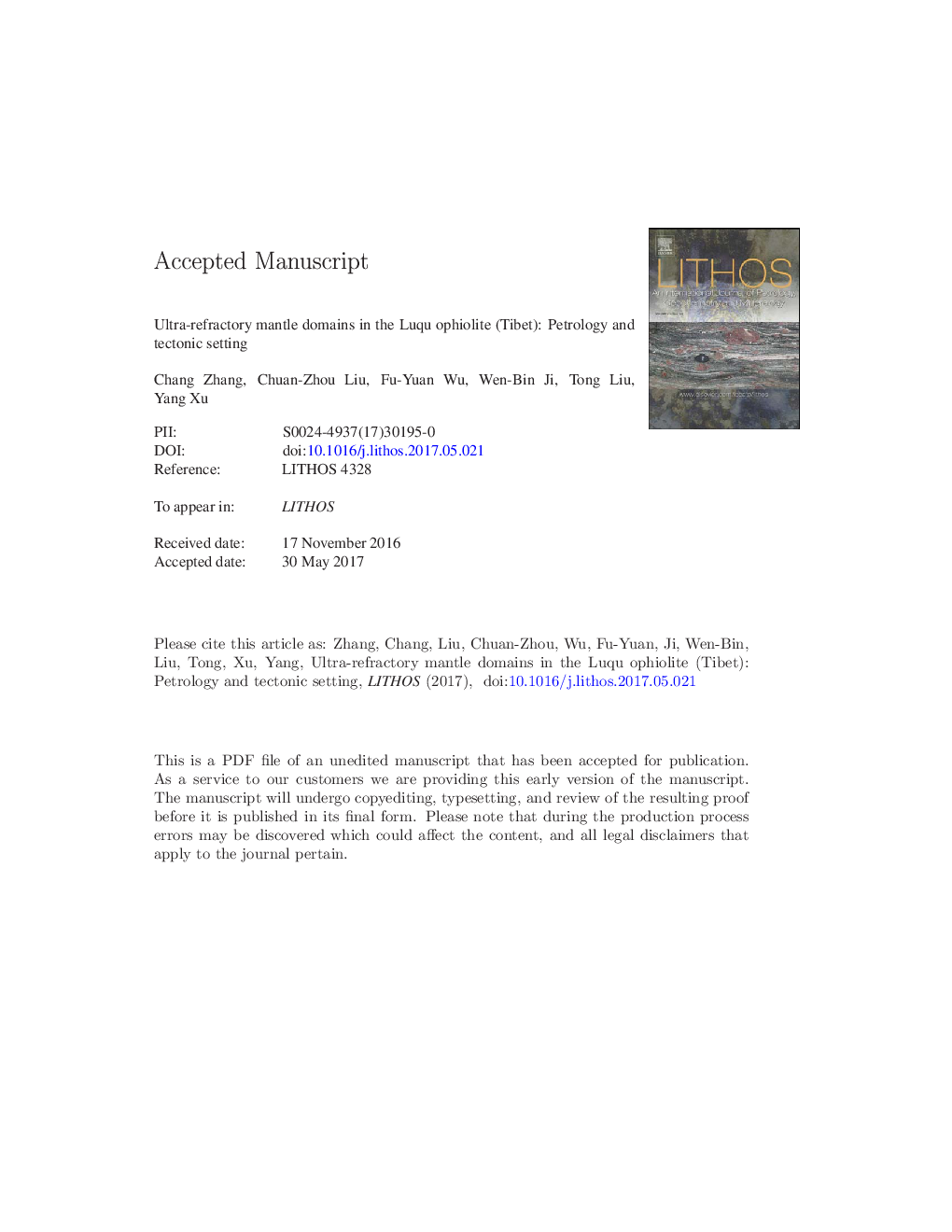| کد مقاله | کد نشریه | سال انتشار | مقاله انگلیسی | نسخه تمام متن |
|---|---|---|---|---|
| 5784233 | 1638629 | 2017 | 56 صفحه PDF | دانلود رایگان |
عنوان انگلیسی مقاله ISI
Ultra-refractory mantle domains in the Luqu ophiolite (Tibet): Petrology and tectonic setting
ترجمه فارسی عنوان
حوزه های گوشته فوق العاده مقاوم در لفیفیفیت (تبت): پترولوژی و سازه های زمین شناسی
دانلود مقاله + سفارش ترجمه
دانلود مقاله ISI انگلیسی
رایگان برای ایرانیان
موضوعات مرتبط
مهندسی و علوم پایه
علوم زمین و سیارات
ژئوشیمی و پترولوژی
چکیده انگلیسی
Fresh mantle peridotites occur in the Luqu ophiolite, which is located at the central segment of the Yarlung-Tsangpo Suture Zone in the Tibetan Plateau. This study presents major and trace element compositions of clinopyroxene from harzburgites and dunites of the Luqu ophiolite, with the aim to study melt depletion and late-stage melt-rock interaction processes. The studied harzburgites have refractory to ultra-refractory compositions, as indicated by low whole-rock Al2O3 and high MgO contents, as well as high spinel Cr# values. Clinopyroxenes in the Luqu harzburgites are variably depleted in light rare earth elements (LREEs) relative to the middle and heavy rare earth elements (MREEs and HREEs), with Yb contents of 1.4-3.4 times of CI chondrites. Modeling results suggest that the Luqu harzburgites have experienced up to 8% garnet-facies melting followed by 10-18% fractional melting in the stability field of spinel. In both cases melting occurred under anhydrous conditions. This suggests that the Luqu ophiolite originated from a mid-ocean ridge setting rather than a supra-subduction zone environment. Nevertheless, the high degrees of partial melting are inconsistent with the thin oceanic crustal sequence preserved in the Luqu ophiolite, implying that the Luqu peridotites might have experienced melt extraction prior to entering into the spreading centers of the Neo-Tethyan Ocean during the Early Cretaceous. Clinopyroxenes in the dunites are interstitial among olivine grains. They display slightly LREE-enriched patterns and have higher REE contents than those in the harzburgites. They also show markedly positive anomalies in Sr, Zr and Hf. These features suggest that the dunites were generated through reaction between percolating melts and the harzburgites, during which the interstitial clinopyroxenes formed.
ناشر
Database: Elsevier - ScienceDirect (ساینس دایرکت)
Journal: Lithos - Volumes 286â287, August 2017, Pages 252-263
Journal: Lithos - Volumes 286â287, August 2017, Pages 252-263
نویسندگان
Chang Zhang, Chuan-Zhou Liu, Fu-Yuan Wu, Wen-Bin Ji, Tong Liu, Yang Xu,
